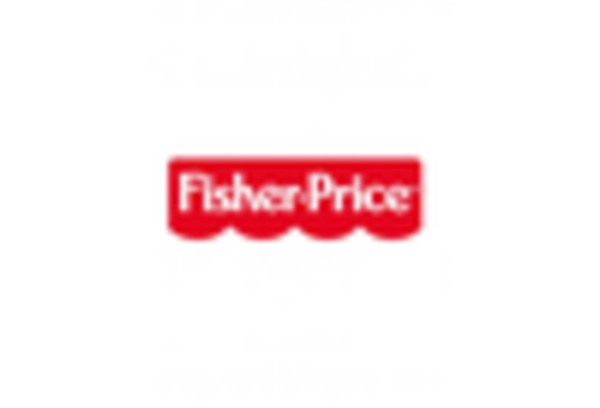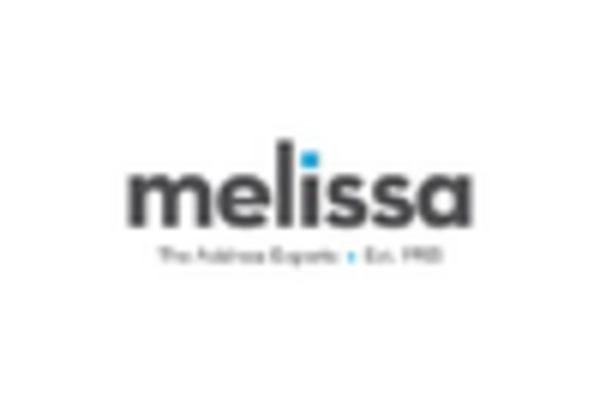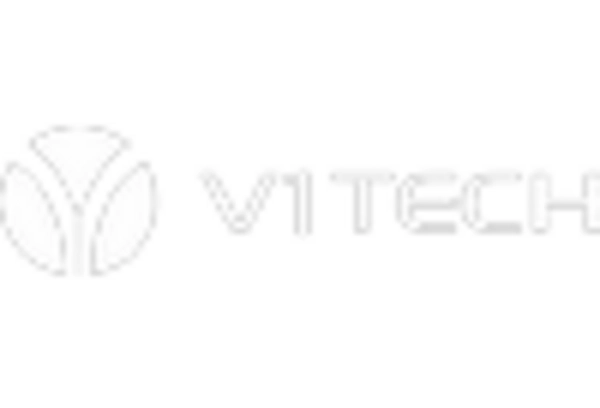The baby toys market in Germany is characterized by a dynamic competitive landscape, driven by innovation, sustainability, and digital transformation. Key players such as Mattel (US), LEGO (DK), and Playmobil (DE) are at the forefront, each adopting distinct strategies to enhance their market presence. Mattel (US) focuses on leveraging its iconic brands through digital engagement and interactive play experiences, while LEGO (DK) emphasizes sustainability in its product lines, aiming to produce all core products from sustainable materials by 2030. Playmobil (DE), on the other hand, capitalizes on its strong heritage and local manufacturing, appealing to consumers' preferences for quality and safety. Collectively, these strategies contribute to a competitive environment that prioritizes innovation and consumer engagement.
In terms of business tactics, companies are increasingly localizing manufacturing to reduce lead times and enhance supply chain efficiency. The market structure appears moderately fragmented, with several players vying for market share, yet dominated by a few key brands that influence trends and consumer preferences. This fragmentation allows for niche players to thrive, particularly those focusing on eco-friendly and educational toys, which are gaining traction among environmentally conscious consumers.
In October 2025, LEGO (DK) announced a partnership with a leading tech firm to develop augmented reality (AR) experiences for its toy lines. This strategic move is likely to enhance consumer engagement by merging physical play with digital interaction, thereby appealing to tech-savvy parents and children alike. The integration of AR into traditional play patterns could redefine how children interact with toys, positioning LEGO as a pioneer in the evolving landscape of play.
In September 2025, Mattel (US) launched a new line of eco-friendly toys made from recycled materials, aligning with the growing consumer demand for sustainable products. This initiative not only reflects a commitment to environmental responsibility but also serves to attract a demographic increasingly concerned with sustainability. By prioritizing eco-conscious manufacturing, Mattel is likely to strengthen its brand loyalty and appeal to a broader audience.
In August 2025, Playmobil (DE) expanded its product range to include a series of educational toys aimed at preschoolers, focusing on STEM learning. This strategic expansion is indicative of a broader trend towards educational play, which is becoming increasingly popular among parents seeking to combine fun with learning. By tapping into this market, Playmobil is positioning itself as a leader in educational toys, potentially increasing its market share in a competitive segment.
As of November 2025, the competitive trends in the baby toys market are heavily influenced by digitalization, sustainability, and the integration of advanced technologies such as AI. Strategic alliances are becoming more prevalent, as companies seek to enhance their product offerings and market reach. The shift from price-based competition to a focus on innovation and technology is evident, with brands investing in unique features and sustainable practices to differentiate themselves. Looking ahead, competitive differentiation is likely to evolve further, with an emphasis on reliability in supply chains and the ability to adapt to changing consumer preferences.

















Leave a Comment